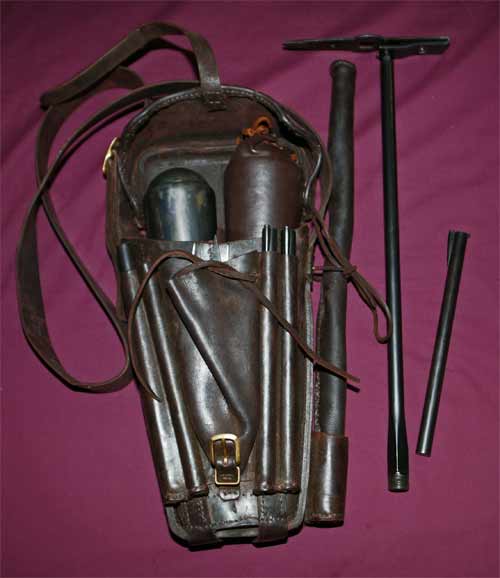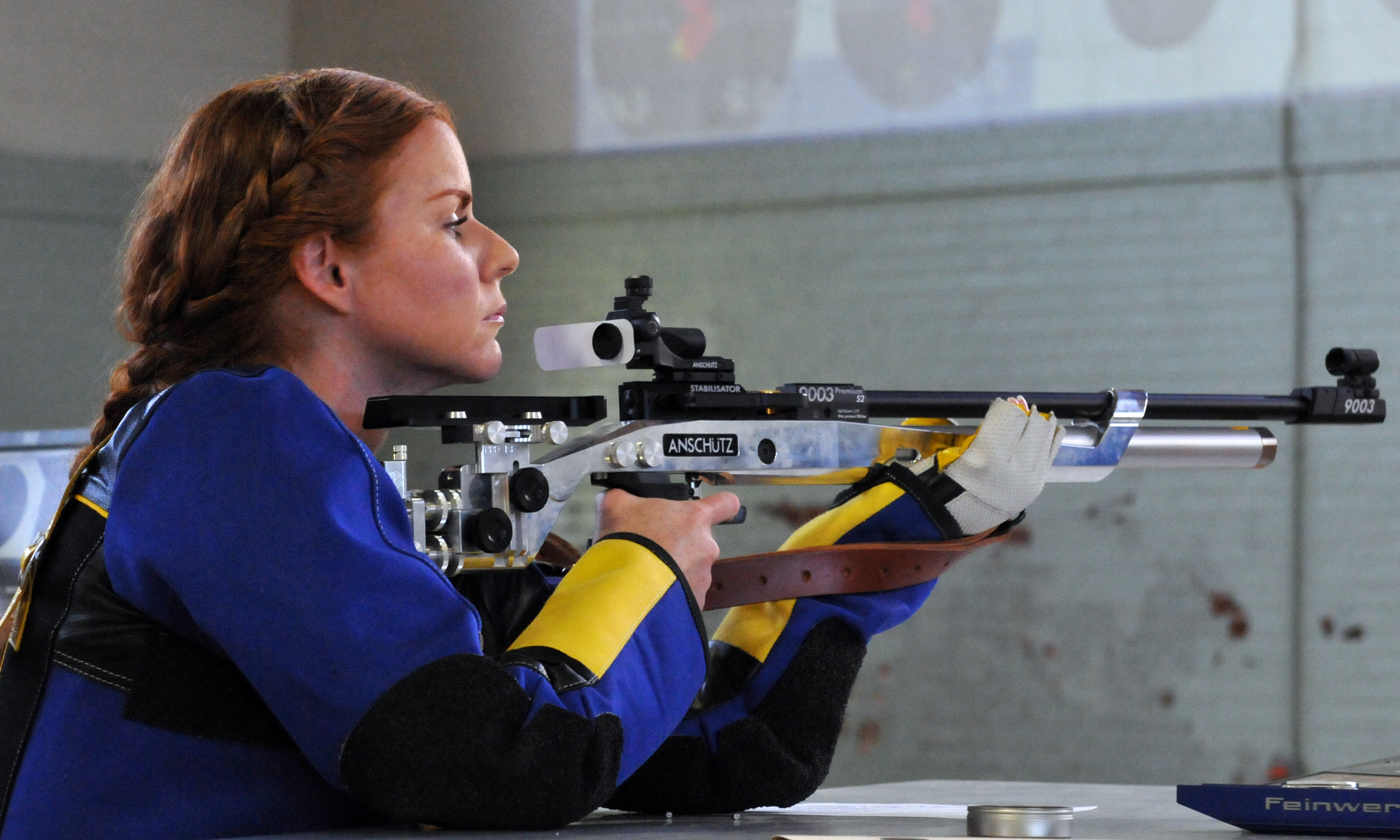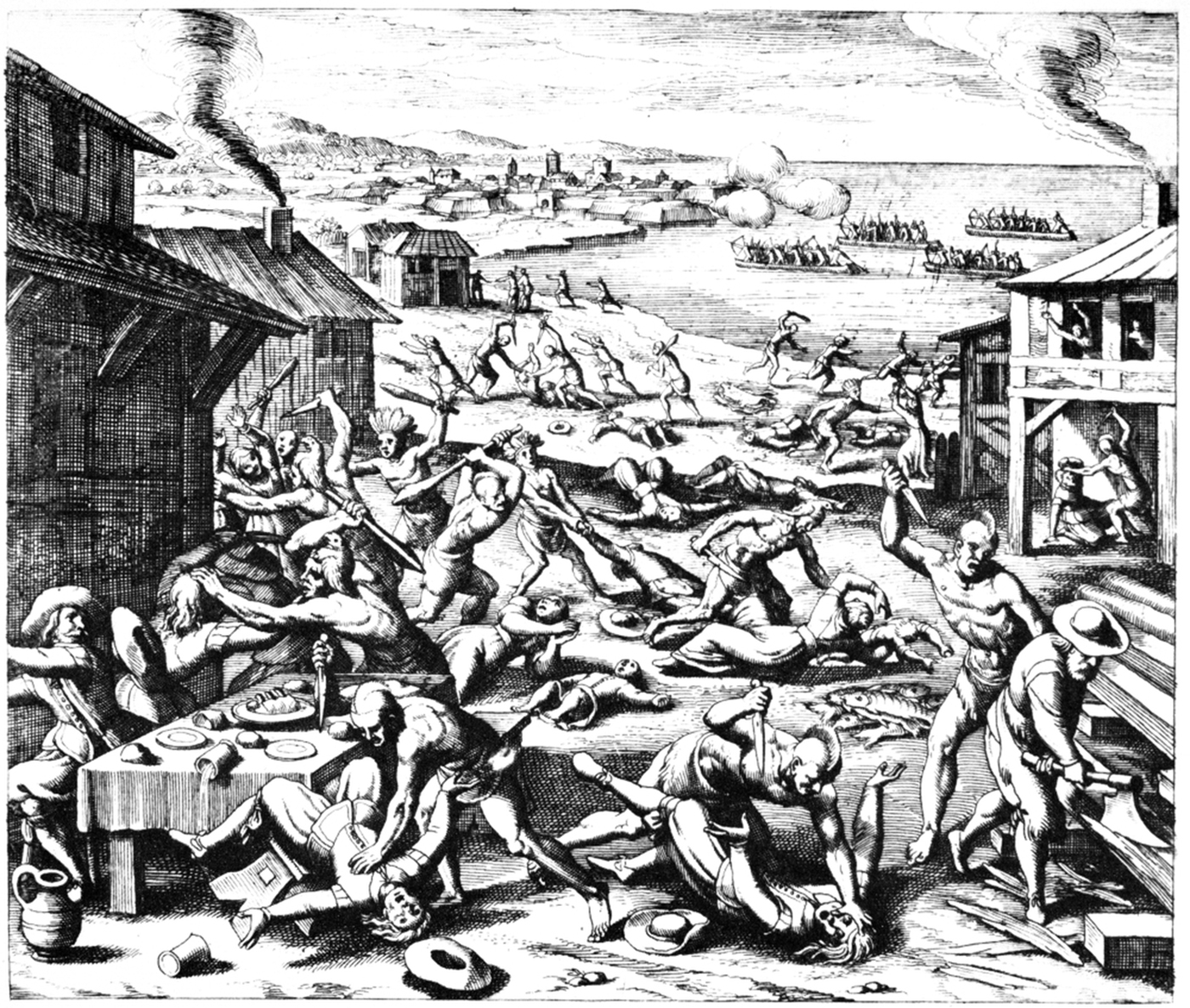|
Repeating Rifle
A repeating rifle is a single-barreled rifle capable of repeated discharges between each ammunition reload. This is typically achieved by having multiple cartridges stored in a magazine (within or attached to the rifle) and then fed individually into the chamber by a reciprocating bolt, via either a manual or automatic action mechanism, while the act of chambering the round typically also recocks the hammer/ striker for the following shot. In common usage, the term "repeating rifle" most often refers specifically to manual repeating rifles (e.g. lever-action, pump-action, bolt-action, etc.), as opposed to self-loading rifles, which use the recoil, gas, or blowback of the previous shot to cycle the action and load the next round, even though all self-loading firearms are technically a subcategory of repeating firearms. Repeating rifles were a significant advance over the preceding single-shot, breechloading rifles when used for military combat, as they allowed a much grea ... [...More Info...] [...Related Items...] OR: [Wikipedia] [Google] [Baidu] |
Spencer Rifle
The Spencer repeating rifle was a 19th-century American lever-action firearm invented by Christopher Spencer. The Spencer carbine was a shorter and lighter version designed for the cavalry. The Spencer was the world's first military metallic-cartridge repeating rifle, and over 200,000 examples were manufactured in the United States by the Spencer Repeating Rifle Co. and Burnside Rifle Co. between 1860 and 1869. The Spencer repeating rifle was adopted by the Union Army, especially by the cavalry, during the American Civil War but did not replace the standard issue muzzle-loading rifled muskets in use at the time. Among the early users was George Armstrong Custer. Design The Spencer is a lever-action repeating rifle designed by Christopher Spencer in 1860. It uses a falling breechblock mounted in a carrier. Firing forces are contained by the receiver at the rear of the breechblock. Actuating the loading lever causes the breechblock to fall. Once the breechblock is clea ... [...More Info...] [...Related Items...] OR: [Wikipedia] [Google] [Baidu] |
Gun Barrel
A gun barrel is a crucial part of gun-type weapons such as small arms, small firearms, artillery pieces, and air guns. It is the straight shooting tube, usually made of rigid high-strength metal, through which a contained rapid expansion of high-pressure gas(es) is used to propel a projectile out of the front end (muzzle (firearms), muzzle) at a high velocity. The hollow interior of the barrel is called the bore, and the diameter of the bore is called its calibre, usually measured in inches or millimetres. The first firearms were made at a time when metallurgy was not advanced enough to cast tubes capable of withstanding the explosive forces of early cannons, so the pipe (often built from staves of metal) needed to be braced periodically along its length for structural reinforcement, producing an appearance somewhat reminiscent of storage barrels being stacked together, hence the English name. History Gun barrels are usually made of some type of metal or Alloy, metal alloy. ... [...More Info...] [...Related Items...] OR: [Wikipedia] [Google] [Baidu] |
Self-loading Firearm
A self-loading firearm is a repeating firearm that can use some of the excess energy released from propellant combustion to cycle its action and facilitate loading of subsequent rounds of ammunition into the chamber, without needing the user to do any extra loading work with their hands. Depending on whether the action can automatically perform both the loading and ignition procedures, or only automatically load the ammo but require manual actuation of the hammer/ striker, self-loading firearms can be categorized into ''automatic'' and '' semi-automatic'' firearms. Categories of self-loading weapons Semi-automatic firearm A semi-automatic firearm is a self-loading repeating firearm whose action mechanism automatically loads a following round of cartridge into the chamber and prepares it for subsequent firing, but requires the shooter to manually actuate the trigger in order to discharge each shot. Typically, this involves the weapon's action utilizing the excess energy rele ... [...More Info...] [...Related Items...] OR: [Wikipedia] [Google] [Baidu] |
Kalthoff Repeater
The Kalthoff repeater was a type of repeating firearm that was designed by members of the Kalthoff family around 1630, and became the first repeating firearm to be brought into military service. At least nineteen gunsmiths are known to have made weapons following the Kalthoff design. Some early Kalthoff guns were wheellocks, but the rest were flintlocks. The capacity varied between 5 and 30 rounds, depending on the style of the magazines. A single forward and back movement of the trigger guard, which could be done in 1–2 seconds, readied the weapon for firing. The caliber of Kalthoff guns generally varied between , though caliber examples also exist. Their guns have been described as advanced clockworks centuries ahead of their time as seen in this disassembly of a rifled .58 30 round example shown her Kalthoff 30-Shot Flintlock: The First Repeating Firearm Used in War (1659) - Forgotten Weapons Origin and production The Kalthoff system originates with a gun which was cr ... [...More Info...] [...Related Items...] OR: [Wikipedia] [Google] [Baidu] |
Girardoni Air Rifle
The Girardoni air rifle is a repeating rifle designed by Ladin inventor Bartolomeo Girandoni in Austria circa 1779. It could be used as flintlock or as air gun, called ''Windbüchse'' ("wind rifle" in German). One of the air rifle's more famous associations is its use on the Lewis and Clark Expedition to explore and map the Louisiana Purchase of 1803. Biography Bartolomeo Girardoni was born 30 May 1744 in Cortina d’Ampezzo, a town populated by Ladins that was part of the County of Tyrol and Austria until after World War I. In 1923 the town and other places were made part of the Province of Belluno. In 2007 the locals voted for assignment to Autonomous Province of Bolzano – South Tyrol were minority rights are in effect. In early 1779, Austrian Field Marshal Franz Moritz von Lacy became aware of Girardoni's repeating rifle and wrote a positive report to Joseph II, Holy Roman Emperor. After some tests, Lacy proposed that he should make 1000 flintlock rifles and 500 air guns ... [...More Info...] [...Related Items...] OR: [Wikipedia] [Google] [Baidu] |
Air Rifle
An air gun or airgun is a gun that uses energy from compressed air or other gases that are mechanically pressurized and then released to propel and accelerate projectiles, similar to the principle of the primitive blowgun. This is in contrast to a firearm, which shoots projectiles using energy generated via exothermic combustion ( detonation) of chemical propellants, most often black powder or smokeless powder. Air guns come in both long gun (air rifle) and handgun (air pistol) forms. Both types typically propel metallic projectiles that are either diabolo-shaped pellets or spherical shots called BBs, although in recent years Minié ball-shaped cylindro-conoidal projectiles called slugs are gaining more popularity. Certain types of air guns (usually air rifles) may also launch fin-stabilized projectile such as darts (e.g., tranquilizer guns) or hollow-shaft arrows (so-called "airbows"). The first air guns were developed as early as the 16th century, and have s ... [...More Info...] [...Related Items...] OR: [Wikipedia] [Google] [Baidu] |
American Indian Wars
The American Indian Wars, also known as the American Frontier Wars, and the Indian Wars, was a conflict initially fought by European colonization of the Americas, European colonial empires, the United States, and briefly the Confederate States of America and Republic of Texas against various Tribe (Native American), American Indian tribes in North America. These conflicts occurred from the time of the earliest colonial settlements in the 17th century until the end of the 19th century. The various wars resulted from a wide variety of factors, the most common being the desire of settlers and governments for Indian tribes' lands. The European powers and their colonies enlisted allied Indian tribes to help them conduct warfare against each other's colonial settlements. After the American Revolution, many conflicts were local to specific states or regions and frequently involved disputes over land use; some entailed cycles of violent reprisal. As American pioneer, American settlers s ... [...More Info...] [...Related Items...] OR: [Wikipedia] [Google] [Baidu] |
American Civil War
The American Civil War (April 12, 1861May 26, 1865; also known by Names of the American Civil War, other names) was a civil war in the United States between the Union (American Civil War), Union ("the North") and the Confederate States of America, Confederacy ("the South"), which was formed in 1861 by U.S. state, states that had Secession in the United States, seceded from the Union. The Origins of the American Civil War, central conflict leading to war was a dispute over whether Slavery in the United States, slavery should be permitted to expand into the western territories, leading to more slave states, or be prohibited from doing so, which many believed would place slavery on a course of ultimate extinction. Timeline of events leading to the American Civil War, Decades of controversy over slavery came to a head when Abraham Lincoln, who opposed slavery's expansion, won the 1860 presidential election. Seven Southern slave states responded to Lincoln's victory by seceding f ... [...More Info...] [...Related Items...] OR: [Wikipedia] [Google] [Baidu] |
Cavalry
Historically, cavalry (from the French word ''cavalerie'', itself derived from ''cheval'' meaning "horse") are groups of soldiers or warriors who Horses in warfare, fight mounted on horseback. Until the 20th century, cavalry were the most mobile of the combat arms, operating as light cavalry in the roles of reconnaissance, Screening (tactical), screening, and skirmisher, skirmishing, or as heavy cavalry for decisive economy of force and shock attacks. An individual soldier in the cavalry is known by a number of designations depending on era and tactics, such as a cavalryman, Equestrianism, horseman, trooper (rank), trooper, cataphract, knight, Drabant Corps of Charles XII, drabant, hussar, uhlan, mamluk, cuirassier, lancer, dragoon, samurai or horse archer. The designation of ''cavalry'' was not usually given to any Military animal, military forces that used other animals or platforms for mounts, such as chariots, Camel cavalry, camels or War elephant, elephants. Infantry who m ... [...More Info...] [...Related Items...] OR: [Wikipedia] [Google] [Baidu] |
Infantry
Infantry, or infantryman are a type of soldier who specialize in ground combat, typically fighting dismounted. Historically the term was used to describe foot soldiers, i.e. those who march and fight on foot. In modern usage, the term broadly encompasses a wide variety of subspecialties, including light infantry, irregular infantry, heavy infantry, mountain infantry, motorized infantry, mechanized infantry, Airborne forces, airborne infantry, Air assault, air assault infantry, and Marines, naval infantry. Other subtypes of infantry, such as line infantry and mounted infantry, were once commonplace but fell out of favor in the 1800s with the invention of more accurate and powerful weapons. Etymology and terminology In English, use of the term ''infantry'' began about the 1570s, describing soldiers who march and fight on foot. The word derives from Middle French , from older Italian (also Spanish) ''infanteria'' (foot soldiers too inexperienced for cavalry), from Latin '' ... [...More Info...] [...Related Items...] OR: [Wikipedia] [Google] [Baidu] |
Henry Rifle
The Henry repeating rifle is a lever-action tubular magazine rifle. It is famous for having been used at the Battle of the Little Bighorn and having been the basis for the iconic Winchester rifle of the American Wild West. Designed and introduced by Benjamin Tyler Henry in 1860, the original Henry was a sixteen-shot .44 caliber rimfire breech-loading lever-action rifle. It was produced from 1860 until 1866 in the United States by the New Haven Arms Company. The Henry was adopted in small quantities by the Union in the American Civil War, favored for its greater firepower than the standard-issue carbine. Many later found their way West, notably in the hands of a few of the Sioux and Cheyenne in their defeat of George Armstrong Custer's U.S. Cavalry troops in June 1876. Modern replicas are produced by A. Uberti and Henry Repeating Arms in .44-40 Winchester and .45 Colt. History left, Patent drawing of the Henry rifle The original Henry rifle was a sixteen-sh ... [...More Info...] [...Related Items...] OR: [Wikipedia] [Google] [Baidu] |
Rate Of Fire
Rate of fire is the frequency at which a specific weapon can fire or launch its projectiles. This can be influenced by several factors, including operator training level, mechanical limitations, ammunition availability, and weapon condition. In modern weaponry, it is usually measured in rounds per minute (RPM or round/min) or rounds per second (RPS or round/s). There are three different measurements for the rate of fire: cyclic, sustained, and rapid. Cyclic is the maximum rate of fire given only mechanical function, not taking into account degradation of function due to heat, wear, or ammunition constraints. Sustained is the maximum efficient rate of fire given the time taken to load the weapon and keep it cool enough to operate. Finally, rapid is the maximum reasonable rate of fire in an emergency when the rate of fire need not be upheld for long periods. Overview For manually operated weapons such as bolt-action rifles or artillery pieces, the rate of fire is governed primarily ... [...More Info...] [...Related Items...] OR: [Wikipedia] [Google] [Baidu] |





